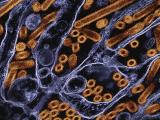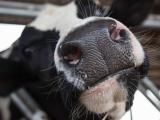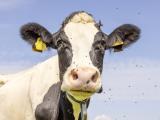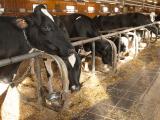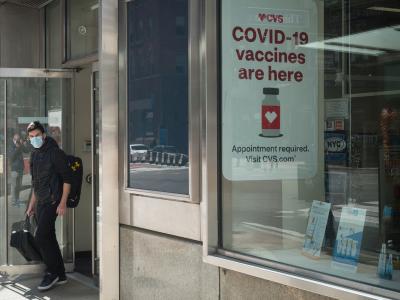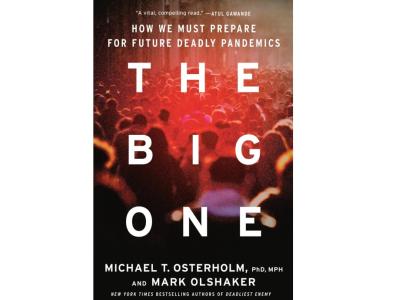Jan 30, 2004 (CIDRAP News) – Highly pathogenic avian influenza has turned up in poultry flocks in two provinces in central China, far from the southern province where the country's first outbreak was reported 3 days ago, Chinese and international health officials said today.
Outbreaks were confirmed in Hubei and Hunan provinces, according to Xinhua, China's state news agency, and the World Health Organization (WHO). In addition, outbreaks are suspected in Anhui and Shanghai provinces in eastern China and in Guangdong province in the south, officials said.
China's first confirmed outbreak of avian influenza A(H5N1) was reported Jan 27 at a duck farm in Guanxi province, near the Vietnamese border in southern China.
Xinhua said the infected and potentially infected flocks were being slaughtered and the farms quarantined. "The epidemic situation in those areas is under control and no infections in human beings have been found," the agency said. The WHO said Chinese laboratories were testing samples from birds from the suspected outbreak sites.
Yesterday China's State Council, or cabinet, decided to establish a national command center to combat the avian flu, according to the newspaper China Daily. Vice Premier Hui Liangyu was named to direct the center.
The WHO's count of confirmed human cases was still 11, including three in Thailand and eight in Vietnam. Two patients in Thailand and six in Vietnam have died of the illness.
Meanwhile, the virus has spread across more than a third of Thailand, according to a Reuters report today. A new outbreak in Phang Nga province was the first in southern Thailand, the story said. In Vietnam, the disease has infected birds in 34 provinces and triggered the destruction of 7 million birds, according to the government-run Vietnam News Agency.
Today the WHO recommended seasonal flu shots for people who may be exposed to the H5N1 virus, including poultry farm workers, those involved in poultry culling, and healthcare workers caring for people known to have the avian flu. Vaccination with this year's flu vaccine will not protect people from the H5N1 virus, but it will reduce the risk of co-infection with human and avian viruses and viral mixing that could produce a dangerous new strain, the agency said.
Health experts fear that such co-infections could produce a strain that could spread easily from person to person, potentially causing a pandemic like those of 1918, 1957, and 1968. "The pandemic viruses of 1957 and 1968 were reassortants of human and avian subtypes of influenza A," the WHO said. But the agency did not recommend mass vaccination of people in affected areas.
In other developments, the Indonesian government has changed direction and called for a "selective cull" of all chickens infected with the avian flu, according to a report in the Jakarta Post. The government previously had said it would leave culling decisions to poultry farmers. But veterinary experts in Indonesia said only a mass slaughter of all chickens would be enough to fend off an uncontrollable outbreak, according to the report.
Elsewhere, a controversy about the origins of the current crisis cropped up yesterday when the magazine New Scientist published a report suggesting that the H5N1 outbreak began as early as the first half of 2003, probably in China. Chinese officials quickly denied the suggestion, and the WHO said there was too little evidence to say where the current outbreaks began.
After the 1997 H5N1 outbreak in Hong Kong, which killed 6 people, Chinese poultry producers started vaccinating flocks with inactivated H5N1 virus, according to the magazine report. If the vaccine didn't match the virus closely, this might have permitted the virus to replicate without causing symptoms, which might have enabled it to spread without being noticed, the article said.
WHO flu expert Klaus Stohr told the magazine that it appears that all the current H5N1 outbreaks stemmed from widespread distribution of the same strain. According to the story, Stohr said some samples taken early in 2003 match the current strain. He wouldn't say where the samples came from, but information from other experts (who went unnamed) suggest it was China, the report said.
Xinhua published an article rejecting the theory. Li Kangran, a professor at Guangxi University, said, "The facts indicate that the vaccination could not be the reason for the bird flu in Guanxi." He said the inactivated H5N1 virus can survive in cells but is too weak to spread to other cells.
The WHO, in a statement yesterday, said H5N1 viruses taken recently from humans and birds are being compared with viruses obtained from birds several months ago. "Results indicate that the virus now causing severe disease in poultry and some humans has been circulating in parts of Asia for longer than initially presumed," the agency said. "Presently available evidence from these studies is not sufficient to support any speculations about the geographical origins of the current outbreaks of . . . H5N1 avian influenza."
See also:
WHO Jan 30 release on new poultry outbreaks in China
http://www.who.int/csr/don/2004_01_30/en/
WHO guidelines on use of flu vaccine in people at risk for H5N1 flu
http://www.who.int/influenza/human_animal_interface/virology_laboratories_and_vaccines/vaccine_use_h5N1_riskgroups/en/
Jan 29 WHO update addressing investigation of origins of current outbreaks
http://www.who.int/csr/don/2004_01_29/en/
